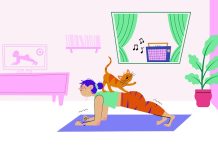
Differentiating between normal anxiety and generalized anxiety disorder (GAD) can be tricky.
GAD is marked by excessive, exaggerated anxiety and worry about everyday life events for no obvious reason.
People with symptoms of generalized anxiety disorder tend to always expect disaster and can’t stop worrying about health, money, family, work, or school.
The condition has symptoms similar to panic disorder, obsessive-compulsive disorder, and other types of anxiety. These symptoms include constant worry, restlessness, and trouble with concentration.
Causes of and risk factors for GAD may include both environmental and genetic factors, such as a family history of anxiety. recent or prolonged exposure to stressful situations, including personal or family illnesses.
Treatment may include counseling and medication, such as antidepressants.
On the other hand, in healthy people, feelings of anxiety can be mild or intense (or anywhere in between), depending on the person and the situation.
Mild anxiety can feel like a sense of uneasiness or nervousness. More intense anxiety can feel like fear, dread, or panic. Worrying and feelings of tension and stress are forms of anxiety.
How do you know, especially if you are a little more anxious than others, whether or not your anxiety is significant enough to qualify as a disorder?
This video shows you the differences between normal anxiety and GAD.
Disclaimer: Any information on diseases and treatments available in this video is intended for general guidance only and must never be considered a substitute for the advice provided by your doctor or other qualified healthcare professional.
Always seek the advice of your physician or other qualified health care professional with questions you may have regarding your medical condition.
If you care about anxiety, please read studies that common sleep and anxiety drug may cause addiction, and a natural food supplement may relieve anxiety.
Source: Psych2Go



